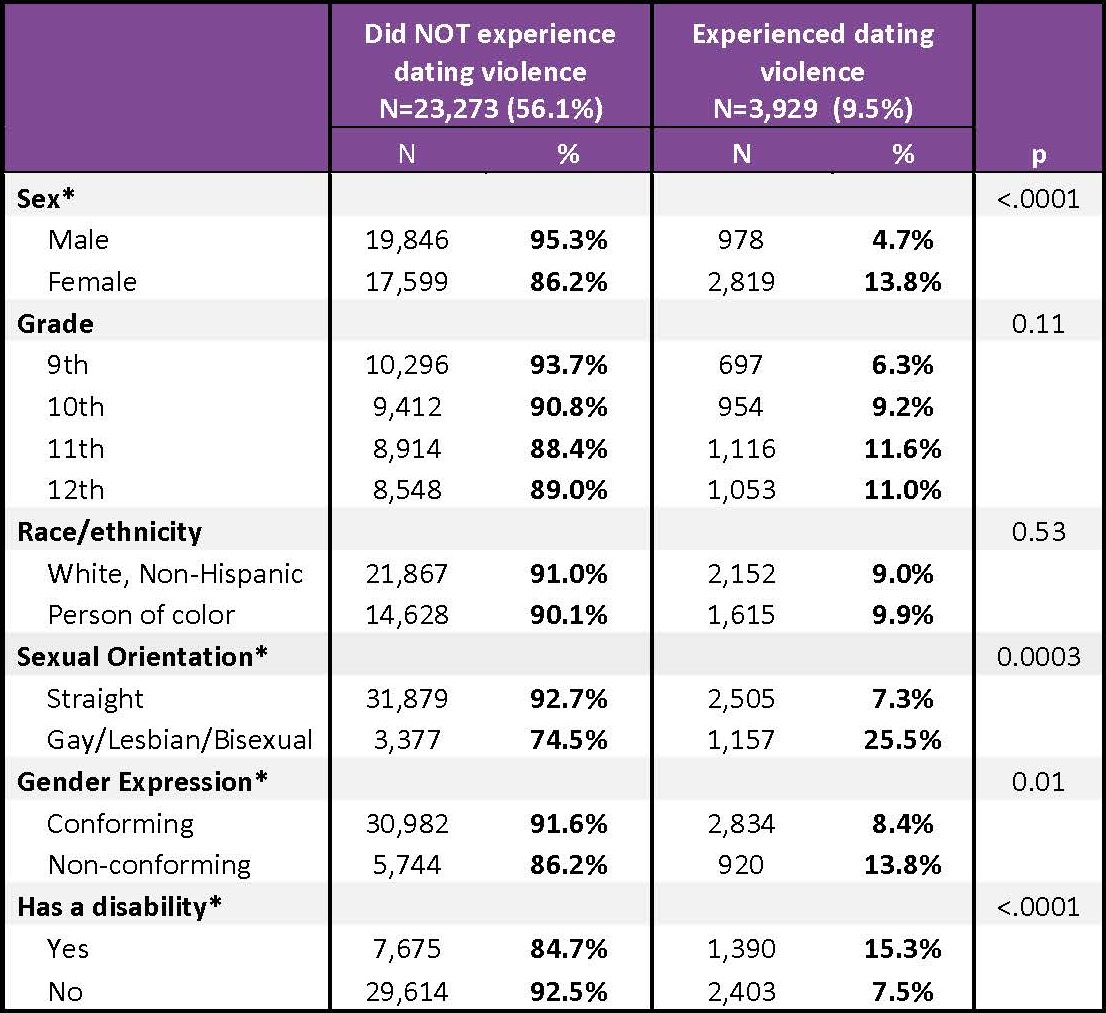Teens
Teens and Dating Violence
Intimate partner violence starts early. According to the CDC, 26% of women and 15% of men first experienced intimate partner violence before the age of 18.
Percentage of adults who first experience intimate partner violence before age 18
Women
26%
Men
15%
Citation: Infographic about Intimate Partner Violence. Violence Prevention. Centers for Disease Control and Prevention. Accessed January 17, 2024. https://www.cdc.gov/violenceprevention/communicationresources/infographics/ipv.html
Teens Who Have Experienced Teen Dating Violence
1 in 7
Disparities and Dating Violence Among RI High School Students
The following groups experienced significantly higher rates of dating violence than their counterparts. Please see the full table below for more details.
13.8%
Female students
25.5%
Gay/Lesbian/Bisexual
13.8%
Gender non-conforming
15.3%
Students with a disability

Excludes those who did not date anyone in the last 12 months. Percentages read across rows; * indicates a significant difference, p<.05.
Citation: 2019 Rhode Island High School Youth Risk Behavior Survey. Rhode Island Department of Health, Center for Health Data and Analysis. (2021).
Note:
- Systemic oppressions contribute to these alarming disparities in rates of intimate partner violence (IPV). Communities that experience IPV at disproportionately high rates are made more vulnerable to discrimination and violence due to the harms and barriers they face based on aspects of identity, including race, gender, sexual orientation, and disability.
About the Youth Risk Behavior Survey
The Rhode Island Youth Risk Behavior Survey (YRBS) helps shine a light on the experiences of teens in our state regarding the types of violence they may be experiencing and the health risk behaviors they may be participating in. With this data, we can better understand how teen dating violence and its risk factors are impacting young people in Rhode Island. We can then use the data to sound the alarm about the urgent need to respond to and prevent teen dating abuse.


